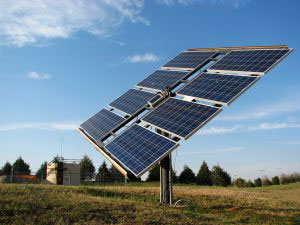Solar Power Plants Produce Energy for Indoor Heating and Commercial Use
Download Audio VersionSolar power plants use complex systems of mirrors and lenses to direct and focus sunlight. They produce electricity for hundreds of thousands of households and create jobs in local communities. This is a cost-competitive, clean, and reliable source of energy that uses innovative, modular technologies.
Why Do We Need Solar Power Plants?
Collectors and panels are limited to temperatures of up to 400 F (200°C). Plants use different technologies, including mirrors and reflecting concentrators to reach higher output temperatures. There are facilities that generate electricity for residential and commercial units. However, parabolic trough power facilities are the only systems that are designed for commercial use. They are fitted with one-axis tracked collectors and curved mirrors to track the sun and focus sunlight. Fresnel collectors can be used to reduce heat loss.
Some systems are made of absorber tubes for thermo oil. Oil is heated up to 750 F (400°C), and the fluid is used to heat steam. Heated steam is produced by a superheater, vaporizer, and economizer. A reheater is used to heat the steam in a two-stage turbine. Mechanical energy is transformed into electricity by an electric generator powered by the turbine.
Other Types

In addition to parabolic trough power technologies, there are thermal energy, photovoltaic energy, and other plants. Thermal energy technologies generate energy for indoor heating systems and heating water. Sunlight is captured and converted into energy by using thermal cells. Photovoltaic systems generate energy to power household appliances. Solar dishes are another variety and work much like parabolic troughs. They track direct sunlight to a central point that is found above the dish. Some units use hydrogen gas while others are filled with a heat transfer fluid and produce steam. Solar power towers are also used to generate electricity. They include hundreds and even thousands of mirrors that capture and reflect light. Sunlight is directed to the top of the tower where heat is stored. Such units operate in the United States and Spain and are also known as central towers. When it comes to design, some towers are water-cooled while others are air-cooled. The latter are designed for desert areas and regions with limited rainfall. Some facilities use curved glass and others – flat glass, which is less expensive. Generators create electricity while turbines are powered by heated steam. Central towers also have control systems that monitor different devices such as alarms and heliostat array positions.
Solar Chimneys for Areas with Little Rainfall
There are also solar chimneys with big central towers. They heat air which is directed to turbines inside the tower. The turbines produce electricity. Other design elements include outlet and inlet air apertures, ventilation shafts, and a collector area. Chimneys are usually black which helps absorb sunlight. Updraft towers of this type do not require cooling water. This is a major advantage, especially in regions that face shortages of drinking water. Collectors use diffused and directed radiation. The chimney itself is reliable, and the generator, transmission, and turbines process a steady airflow. They are the only movable parts which makes the tower a stable structure that requires little maintenance. It is made from glass, sand, stones, and concrete which are available in sufficient quantities. Central towers are built in developing and developed countries because they do not require a substantial investment. Towers can be built using local resources and workforce, and this creates new jobs and reduces the cost of producing heat and electricity. The major disadvantage is that only a small percentage of the collected sunlight is converted into electricity. Another downside is that the collectors require a large area. Land use is a factor in densely populated areas but not a disadvantage in countries with large deserts.
Cost of Energy Production
The cost varies depending on the type of facility. In the case of central towers, the upfront costs are higher than coal-powered plants. Energy prices are competitive when interest rates are low. The cost of energy production is lower in countries where wages are low. Chimneys are also a wise investment in desert areas in which stone and sand are abundant. Factors that determine the cost of different systems include storage size, location, design, system concept, as well as size. The cost of electricity varies between $0.15/kWh and $0.23/kWh, depending on whether it is series production or not.
Theoretically speaking, if solar panels are installed on an area of 94,000 sq. m. (1 percent of the area of the Sahara Desert), the amount of energy produced will be sufficient to meet global demand. This means that solar plants have a major role to play in the near future. Developing countries will benefit the most because of the reduced need to import gas, oil, and coal.
